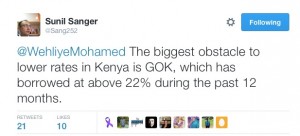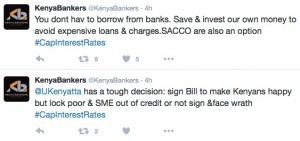The banking interest rate cap came into effect last week and some banks, like Coop and KCB have set out to comply with the new rates for new loans. But some people have been saying that they will shift to SACCO’s if banks cut back on borrowing that they consider too risky to make at below the 14.5% set by the new law.
 But SACCO’s won’t really replace banks. SACCO’s (savings and credit society societies) in which members register, save, and borrow are very good vehicles for customers who understand their needs and have definite investment goals. They are able to borrow loans, at lower rates than banks and often without the need for collateral, usually by having other members guarantee each other.
But SACCO’s won’t really replace banks. SACCO’s (savings and credit society societies) in which members register, save, and borrow are very good vehicles for customers who understand their needs and have definite investment goals. They are able to borrow loans, at lower rates than banks and often without the need for collateral, usually by having other members guarantee each other.
But the amount members can borrow is limited, usually by how much they have saved (you cannot borrow more than five times your savings, how much they have outstanding or how many loans they already have. Also you can’t borrow until you have been a member and built up savings for about six months. They require regular deposits, usually each month so this work with salaried people or disciplined savers. They also work well with rural societies and farmers, though some in sectors like coffee have been plagued by debts following crop failure or society mismanagement.
Finally, some SACCO’s uch as Mwalimu, Harambee, Kenya Police, and Afya have over ten billion shillings in assets, but most SACCO’s are smaller than banks and don’t have the credit to lena or range of products that banks do to lend to millions of borrowers. While some SACCO’s have bank-like services like cheque books, and debit cards, they also don’t have the range of financing – trade finance, overdrafts, credit cards that bank customers are used to.


